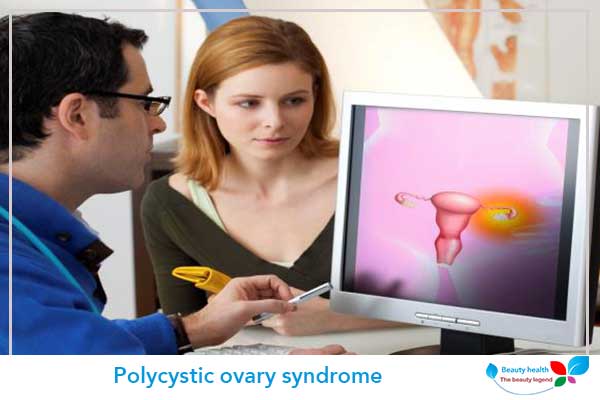Polycystic ovary syndrome
Polycystic ovary syndrome
Polycystic ovary syndrome | What is the difference between polycystic ovaries and polycystic syndrome, what are the symptoms of polycystic ovaries for girls, how do the degrees of polycystic ovaries differ
Polycystic ovary syndrome
Polycystic ovary syndrome | What is the difference between polycystic ovaries and polycystic syndrome, what are the symptoms of polycystic ovaries for girls, how do the degrees of polycystic ovaries differ, and what are the methods of treating polycystic ovaries . The phenomenon of polycystic ovaries must be one of the things that occupy the minds of many women, so today we will give you a detailed explanation of this phenomenon and how to get rid of polycystic ovaries.
What is polycystic ovary syndrome, abbreviated PCO, which is a group of symptoms that affect women and are the result of high levels of androgens and lead in many cases to delayed pregnancy as the incidence of pregnancy decreases with polycystic ovaries, especially when symptoms of severe polycystic ovaries appear .
The difference between cyst and polycystic syndrome:
What is the difference between the cystic and PCOS and known to our article Is pregnancy occurs with PCOS :
- Ovarian cysts or cysts, which are sacs surrounding the ovaries and can be viewed through imaging devices such as ultrasound.
- As for PCOS, it is a hormonal imbalance that appears on ultrasound machines and the eggs are on its surface.
Symptoms of PCOS for girls:
The symptoms of polycystic ovaries for girls are similar to the symptoms of polycystic ovaries for married women, and the most important of these symptoms are:
- Dark spots appear on the neck, armpits and between the breasts.
- Weakness and hair loss.
- Some grains and pimples, especially acne, also appear .
- Weight gain and belly fat loss.
- Change in eating habits and aversion to certain foods.
- Weakness in the immune system Know how to strengthen the immune system .
- Anxiety , insomnia and cases of depression.
- Pain in the pelvic area.
- The emergence of disorders in the thyroid gland .
- Delayed or absent blood circulation.
- Late pregnancy and non-occurrence.
Causes of PCOS for girls:
The causes of PCOS for girls are multiple, the most important of which are:
- High insulin in the body leads to polycystic ovary syndrome, which explains why women with high weight suffer from it.
- The increase in insulin in the blood also leads to disruption of ovulation and irregular menstruation.
- Some infections that affect the reproductive system lead to polycystic ovaries as well.
- Genetics also plays a major role in the occurrence of PCOS.
- Fatigue and stress can cause PCOS to develop.
- Excess weight is one of the most common causes of PCOS.
- Women with obstructive sleep apnea.
- Lack of general hygiene may cause the accumulation of germs and bacteria, which leads to the occurrence of polycystic ovaries.
- Poor food in important nutrients such as proteins, vitamins and minerals.
- Weakened immunity in women may also cause PCOS.
- Ovarian irritation caused by an excess of ovarian hormone in the pituitary gland.
PCOS can be associated with a large number of health problems if not treated properly.
Polycystic ovaries and pregnancy:
Polycystic ovaries and pregnancy experiences are numerous. There are those who managed to become pregnant with polycystic ovaries, but in order for a certain pregnancy to occur, ovarian syndrome must be treated to speed up the occurrence of pregnancy because polycystic ovary syndrome delayed pregnancy or prevented it from occurring in most cases.
Polycystic ovaries grades:
According to Dr. Ahmed Assem, ICSI consultant doctor, the degrees of PCOS are 3 degrees, which are:
- The degree of simple ovarian cysts, in which the ovulation process is active, and the symptoms of ovulation appear, and they are lightly harmful to the woman and may lead to a delay in pregnancy.
- Moderate degree of PCOS, accompanied by irregular menstruation and anovulation.
- The degree of severe ovarian cysts that is accompanied by a significant weight gain, which can cause complete infertility .
Treatment of polycystic ovaries for married women:
Polycystic ovaries can be treated for a girl and a married woman by following the following methods:
Treatment of polycystic ovaries without surgery:
There are several non-surgical methods used to treat the problem of polycystic ovaries, and they are sufficient in most cases, namely:
- Waiting for the ovarian cyst to come out on its own, and this may take several months.
- Exercising and dieting to lose weight.
- Birth control pills can be used to get rid of PCOS but only after consulting a doctor.
- Rely on a healthy diet rich in vitamins, minerals and fiber by eating more vegetables and legumes.
- Avoid drinking coffee and replace it with green tea.
- Eat iron-rich foods such as spinach, broccoli and eggs.
- Eat olive oil because it helps treat inflammation that leads to polycystic ovaries.
- Take vitamin B supplements.
Surgical treatment of polycystic ovaries:
In some cases, the ovarian cyst is large and causes many problems, and it is difficult to get rid of it by natural methods. Therefore, surgical procedures are used in order to get rid of the cyst. This is often done using a laparoscopic process to remove the cyst without the ovary.
